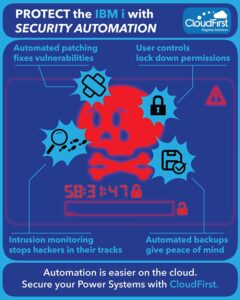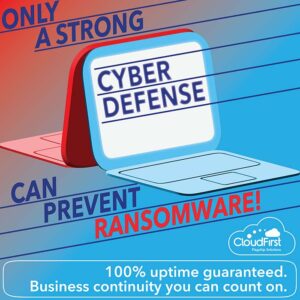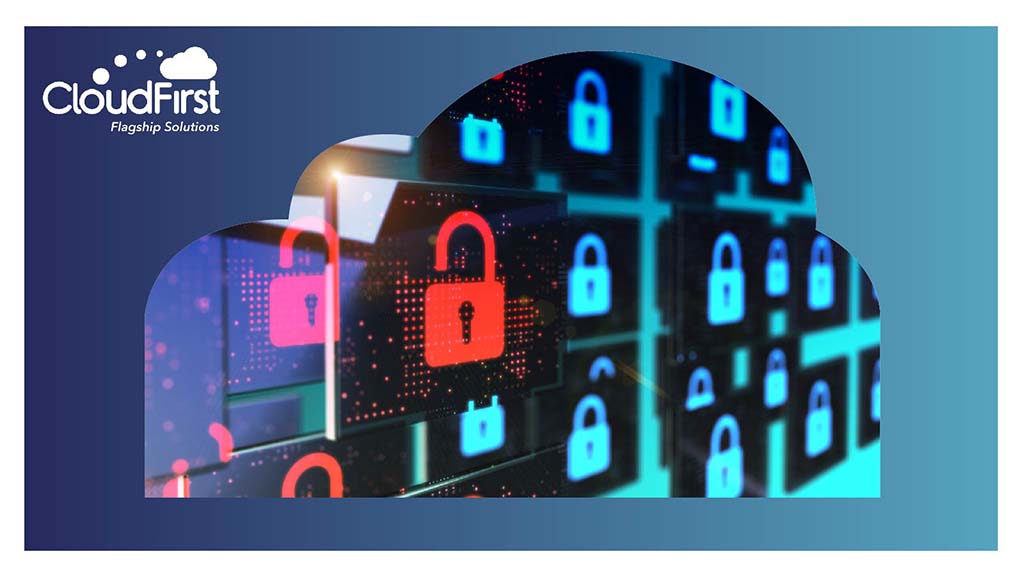Sometimes, the only way to fight fire is with fire.
Hackers aren’t just ahead of the curve; they’re dictating it. Their new ways to manipulate modern tech are impressive and downright scary. And one of the most sophisticated weapons in their arsenal is automation.
A team of hackers that invests in automation is already way ahead of any company using traditional means of protecting themselves from a security breach.
Today’s businesses need to use security automation as a shield. Combining AI and cloud computing can keep you one step ahead of bad actors looking to exploit your weaknesses.
But even companies that make the investment may struggle with overly complicated automation that takes too much time to implement. And if it’s not easy to use, it’s less effective.
A white paper by IDC’s Craig Robinson puts it best: “Relying on tools that are not fully implemented or that do not have the proper visibility and automation to detect and respond to threats—combined with overwhelmed or insufficient staffing—is not acceptable to an organization’s stakeholders.”
So what should a vulnerable business do?
Your security solutions are outdated and ineffective without security automation. Failing to adapt is simply not an option.
Fortunately, thanks to AI-driven security on the cloud, implementing security automation is easier than ever.
What is security automation?

Security automation involves using technology to perform security tasks without human intervention. It’s streamlining processes like updating systems, monitoring networks, detecting threats, and responding to incidents. Automating routine security tasks frees up your workforce to focus on more complex issues.
This is a better use of resources. It improves security by handling menial tasks so employees don’t have to, without leaving any cracks in the shield.
Stopping cyber criminals before they can hit you with ransomware or malware is the primary reason automation is so valuable. But there’s also the capacity for compliance monitoring, which is an enormous boon for organizations. Ensuring compliance with constantly changing regulations demands significant time and resources.
Monitoring this would normally fall to employees, but there’s always the chance of oversight and human error. Automation takes the weight of compliance off your team’s shoulders. It can generate detailed reports and continuously track regulatory requirements. It’s another example of how automation simplifies all business operations—not just your approach to cybersecurity automation for IBM Power Systems.
Why you can’t afford to ignore security automation
Robust security systems aren’t a new concept. But what used to be considered good enough isn’t cutting it with modern IT threats. For a better idea of what makes security automation such a game changer, let’s look at the rise of security orchestration, automation, and response (SOAR).
SOAR combines different processes to protect a company from a cybersecurity threat. It involves both automated and human intervention for a more holistic security plan. Shawn Chakravarty, senior director of the Cyber Fusion Center for Upwork, talks about his experience implementing SOAR in a piece for the SANS Institute after his security researchers found a vulnerability in a project:
“In the SOAR, the alerts had been validated through the vulnerability scan results. Once the SOAR determined a system vulnerability, it sent an alert and created a rule to block the traffic. It documented this rule in a ticket, elevated the ticket’s priority, and sent a Slack message to the Ops team so they could copy the new rule and apply it. This was all done in an hour.”
One hour. That’s all it took for his security team to get a handle on a vulnerability.
You can’t afford to wait for people to notice when a threat is imminent. You need automation to cover any blind spots so your team can spring into action at a moment’s notice. When you layer that on top of automation that deters attackers in the first place, your overall risk profile becomes much smaller.
How AI and cloud computing can simplify security automation

Cybersecurity automation for IBM AIX or IBM i is not just about having security solutions in place; it’s about ensuring those solutions work cohesively and effectively. A fragmented approach to security can lead to gaps in coverage, leaving organizations exposed to attacks. This is a problem we often find in on-prem IT environments.
Cloud computing fosters an integrated approach to security automation. This enables organizations to streamline their security processes and optimize their resources.
Cloud computing solves this by providing a central platform for the deployment and management of various security solutions. For example, organizations can use cloud-native applications like Red Hat’s Ansible for configuration management and automation. Ansible allows security teams to automate repetitive tasks such as patch management and compliance checks—no more utilizing your best and brightest to do something a computer can manage by regularly running the same program.
Cloud computing simplifies security automation, but managing these solutions can still be complex. This is where partnering with a service provider like CloudFirst becomes invaluable. A partner who brings expertise in AI cloud security and automation is an enormous asset.
But how else can cloud computing relieve some of the stress on your security or financial teams—and maybe even yourself?
Operational security
Automation enhances operational security by streamlining the handling of sensitive data. Implementing SOAR is a great example of operational security. It can greatly reduce incident response times. But each step in SOAR is even more efficient when you add cloud computing to the mix.
Cloud-based SOAR solutions can be accessed from anywhere, enabling security teams to watch and respond to incidents remotely. This flexibility is particularly beneficial for organizations with distributed teams or those operating in many locations. Accessing SOAR tools and data in real time enhances collaboration and ensures that security personnel can act swiftly, regardless of their physical location.
The Turkish Journal of Computer and Mathematics Education writes about operational security and its relation to security automation: SOAR has “emerged as promising technology to help SOC [security operations center] teams enhance their efficiency and effectiveness. SOAR platforms can automate tasks, streamline workflows, and provide a single pane of glass for managing security operations. This can enable SOC teams to reduce their workload, improve their response times, and make better decisions.”
The easier it is to implement SOAR solutions, the more streamlined your security automation will be—and the safer your company will be from potential threats.
Financial security
Financial costs associated with IT are often significant. And if your cybersecurity isn’t effective, that investment is essentially wasted. Cloud computing eliminates the need for expensive licensing or ongoing personnel expenses that cut into your bottom line.
Cloud computing changes organizations’ financial landscape by providing a more cost-effective approach to security. Traditional on-premises security solutions often need costly hardware and software. They also include ongoing costs for maintenance, upgrades, and staffing. But with cloud hosting, you pay only for what you use while your trusted cloud partner handles much of the security burden. This means you can spend your money elsewhere.
A Deloitte study looked at an automotive finance provider that achieved impressive savings by leveraging cloud-based solutions. The company began this journey “by upgrading its loan origination platforms and accelerating the delivery of new services and capabilities.” What all started with a cloud migration assessment eventually became a fully realized transformation of what the company was capable of.
Outsourcing their efforts didn’t cost the company their armor either. In fact, it fortified their defenses by resolving “30,000 critical and high cybersecurity threats and vulnerabilities identified by the team.” They improved business and operational efficiency with significantly less overhead while providing a broad solution that reverberated throughout all aspects of the business.
AI for cloud security
Not all automation relies on AI, but many of the most advanced security automation tools we use at CloudFirst are AI-driven.
These AI tools are revolutionizing security measures. And they are often simple to put in place—provided you have the infrastructure.
That’s part of why combining AI and cloud computing is so valuable. It lets companies scale up their AI without spending a fortune on hardware. It offers unparalleled flexibility that enables you to take advantage of things like predictive analytics and other security features.
For IBM Power Systems, access to these tools means you can automate compliance checks, ensuring that security protocols are consistently upheld. It also gives you a proactive approach to security to hammer out risks before they become critical issues.
This could include PowerSC, IBM’s security and compliance feature for Power. It is “designed to help effectively manage the system requirements associated with external standard compliance that can potentially reduce costs and improve compliance.”
Preconfigured profiles, however, are only a fraction of what security automation can do for you. Cloud services don’t force you to use premade strategies. You have the freedom and space to use whatever options best suit your needs.
It’s another example of how cost-effective cloud-based services are. Providers like CloudFirst include advanced AI for cloud security as part of our services. You can access cutting-edge technology without the cost of in-house work.
How CloudFirst can help

CloudFirst makes cybersecurity automation for IBM i easy. With our line of cloud-based security measures, you’ll have access to AI capabilities that can make automation even more robust.
ezAutomate is our latest offering. It includes patch automation, system automation, vulnerability management, cloud gateway protection, and other forms of IT process automation that are designed to keep your IBM Power Systems secure.
Some tasks do require human intervention. ezSecurity, our security managed services offering, is a perfect complement to cybersecurity automation for AS/400 and IBM i because it keeps people in the loop 24-7.
Even in the worst-case scenario, our clients who choose automated backups through ezVault can rest assured that their valuable data and mission-critical applications are fully backed up across multiple geographies. ezRecovery will then help them get back up and running in no time.
The tangible benefits you receive when partnering with CloudFirst don’t just add up to more peace of mind. They reduce costs, free up resources to grow your business, and help you navigate a tough cybersecurity landscape better than you thought possible.
IBM Power Systems cloud automation on autopilot
Cloud computing isn’t just about holding your data—it’s about keeping it safe. The evolving landscape of cybersecurity threats demands that businesses evolve with it. Every modern security strategy should include security automation. And with cloud-based solutions from CloudFirst, you can now keep up with the hackers who are eager for you to hesitate.
Don’t wait for them to seize their opportunity. Consider this your chance to turn the tide in your favor by contacting CloudFirst to learn more about our IBM Power Systems cloud automation services.

